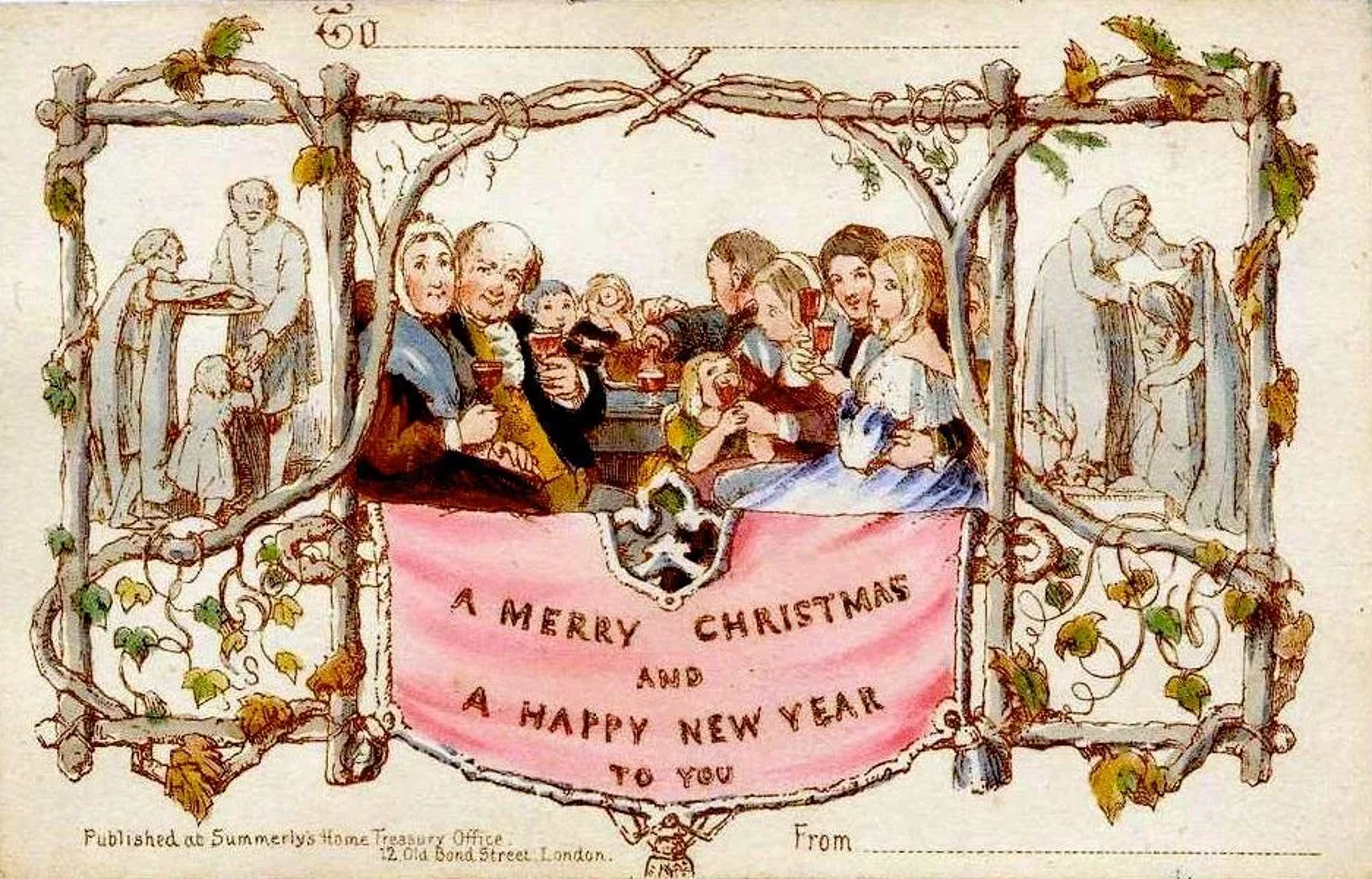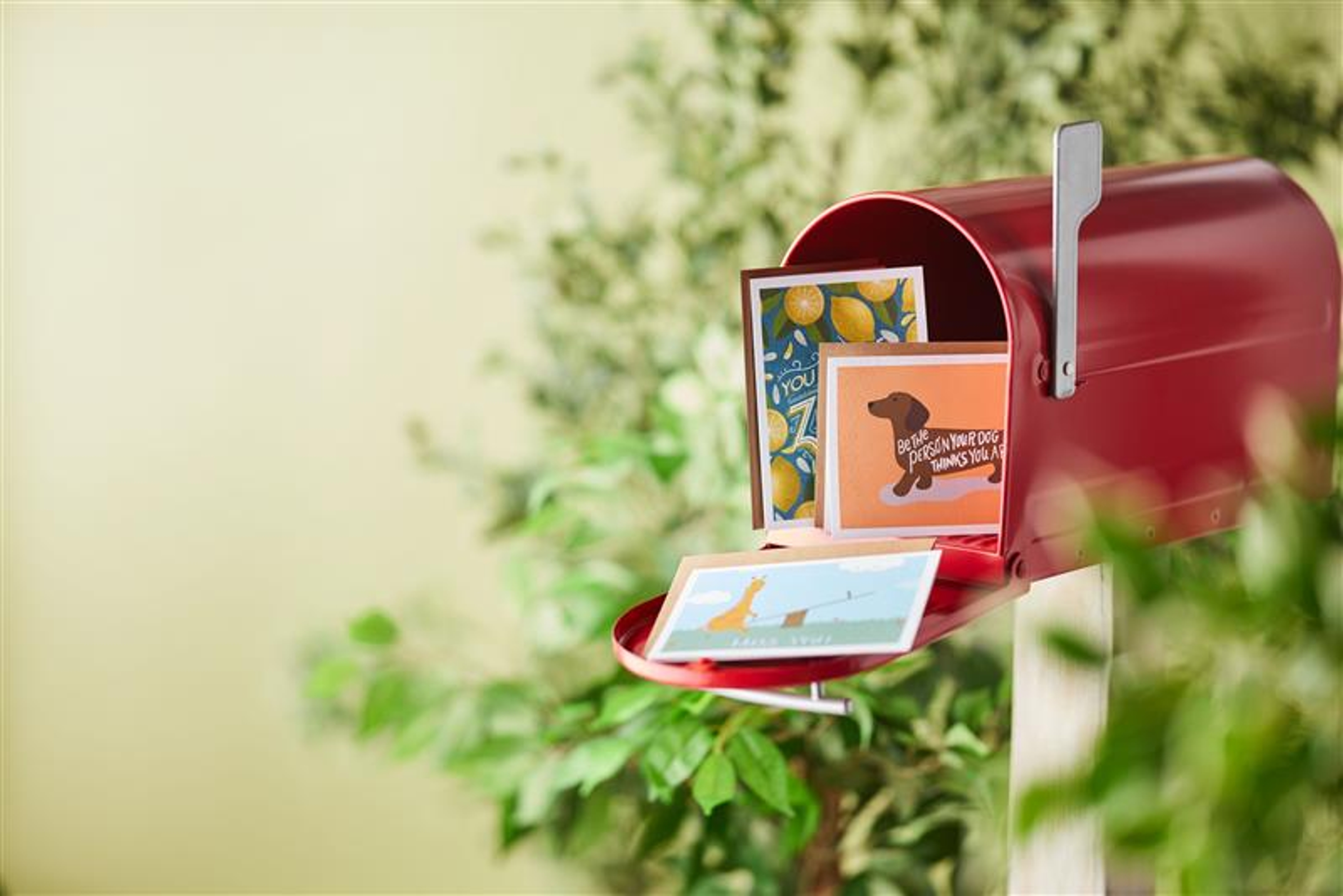The History of Greeting Cards
A lot of envelopes have been licked over the years.
Nov 12, 2024
Forty-five years ago, the innovators driving the personal computing revolution boldly predicted computers would ultimately lead to a near paperless society and perhaps even relegate the United States Postal Service (USPS) to history. They were wrong, of course — colossally wrong. But that's especially good news for greeting card enthusiasts, the industry as a whole, and the USPS.
As any postal carrier with an aching back at Christmas can attest, greeting cards have not only survived the digital age, but they're absolutely thriving. Psychologists tell us that the reasons people still happily participate in the greeting card tradition are nearly as varied as the cards themselves, and as personal as their authors aspire to sound. The fact remains, however, that the tradition simply and lovingly endures. And given the industry’s annual worldwide valuation of $19.25 billion, it will no doubt endure for decades to come.
The origins of greeting cards
Exactly who invented the first greeting card is still hotly debated among historians, with the argument ultimately hinging on the matter of substrate. Not surprisingly, those who strictly define a greeting card as “a sentiment written or printed on flat or folded paper” credit the culture that invented paper: the Chinese. Well after a Han Dynasty (206 BC‒220 AD) official invented paper, Chinese of the Tang Dynasty (618‒907 AD) used it to exchange formal written wishes of good fortune during the Chinese New Year. Less rigid historians argue that greeting cards began with the Egyptians (circa 3000 BCE), who exchanged their own formal well wishes using papyrus scrolls.
Either way, the history of the modern commercial greeting card began in earnest in the late 1400s, when the use of paper spread across Europe. These early efforts may have lacked glitter, pop-up bouquets, or googly eyes — and none of them could play a snappy tune — but they were lovingly handcrafted and decked out in their own way, often boasting calligraphy, watercolor illustrations, and bits of romantic lace to adorn poetic expressions of love.
After the invention of the printing press in 1440, the Germans were among the first to mass produce greeting cards for New Year’s and Valentine’s Day. A Valentine’s Day card from the era is among the British Museum’s most prized examples of early printing; the card is currently on exhibit at the Metropolitan Museum of Art in New York.

The golden age of greeting cards
What’s typically called the “golden age” of greeting cards began during the Industrial Revolution, when the rise of consumerism established a market for cards that could be produced on a grand scale.
Sir Henry Cole (1808‒1882) got the ball rolling. As a British civil servant who developed the modern postal system and was charged with promoting the use of the “Penny Post” service, he hired artist John Calcott Horsley to design a greeting card that could be mass produced. Horsley’s iconic 1843 effort, containing the message “A Merry Christmas and a Happy New Year to You,” depicted a family enjoying a festive Christmas meal, with a few celebrants drinking suspiciously large glasses of wine.
READ MORE: What to Write in a Christmas Card
That tiny bit of artistic license sparked the world’s first greeting card controversy for promoting alcohol consumption, but the backlash wasn’t enough to squelch demand or prevent greeting cards from advancing from a novelty to a necessity. Suddenly, there was a card for every occasion. Even Queen Victoria took up the practice. And Cole and Horsley got the last laugh. A surviving original 1843 Christmas card, which went for a shilling at the time, sold for nearly $35,000 at auction in 2013.
Cole’s influential parallel in the United States was Esther Howland (1828‒1904), who earned her reputation as the “Mother of the American Valentine” for creating highly elaborate, handmade cards with lace, ribbons, and colorful illustrations. Howland’s designs were so impressive that she ultimately established one of the first greeting card companies, New England Valentine Company. By 1870, her business was earning around $100,000 annually — a staggering amount, especially for the time.
Joyce Clyde Hall (1891‒1982), the founder of Hallmark Cards (1910), played a crucial role in the evolution of greeting cards. Hall was a visionary, the first to recognize the emotional response greeting cards could evoke. He also pioneered branded cards, the inclusion of envelopes, and created year-round demand by expanding offerings to niche occasions. Hall’s legacy now includes well wishes for divorces, quitting toxic jobs, and even beginning a therapy journey.
Greeting cards by the numbers
Today, around 90% of households in the U.S. purchase greeting cards at least once a year, with 70% of consumers saying they’re essential to their lifestyle, according to industry data. It’s no wonder, then, that 6.5 billion greeting cards are sent annually, generating an impressive $7 billion in the U.S. alone, according to USPS and additional industry data.
In America, birthdays remain the most popular card-sending occasion, at 3.5 billion annually. As holidays go in America, Christmas still commands the top spot with 1.3 billion cards. Valentine’s Day is responsible for 145 million cards, with Mother’s Day and Father’s Day following close behind at 133 million and 90 million, respectively. Easter, Halloween, and St. Patrick’s Day round out the top seven card-sending holidays, with Easter coming in at 57 million, Halloween at 20 million, and St. Patrick’s Day at 7 million.
Brought to you by the U.S. Postal Service
No accounting of the history of greeting cards can be complete without a nod to the symbiotic relationship between the industry and the USPS. The two simply go together like, well, a greeting card and its perfectly sized and color-coordinated envelope. In fact, the logistical frenzy of the USPS’s busy season, from Thanksgiving to Valentine’s Day, is the primary reason it stays in business. In December alone the USPS processes over 13 billion pieces of mail, with greeting cards and gift packages responsible for a 15‒20% volume increase, according to postal data. During recent boom years, that figure has been as high as 40%.
To be sure, our love affair with greeting cards burns as passionately as ever, and may itself be worthy of a greeting card. In a world increasingly dominated by texts, DMs, emails, and even digital cards, there’s perhaps only one way to explain why, according to the Greeting Card Association, 90% of consumers still prefer a physical greeting card for special occasions: We still crave tangible, personal connections. And that’s something a well-chosen greeting card accomplishes best.
.svg?q=70&width=384&auto=webp)







